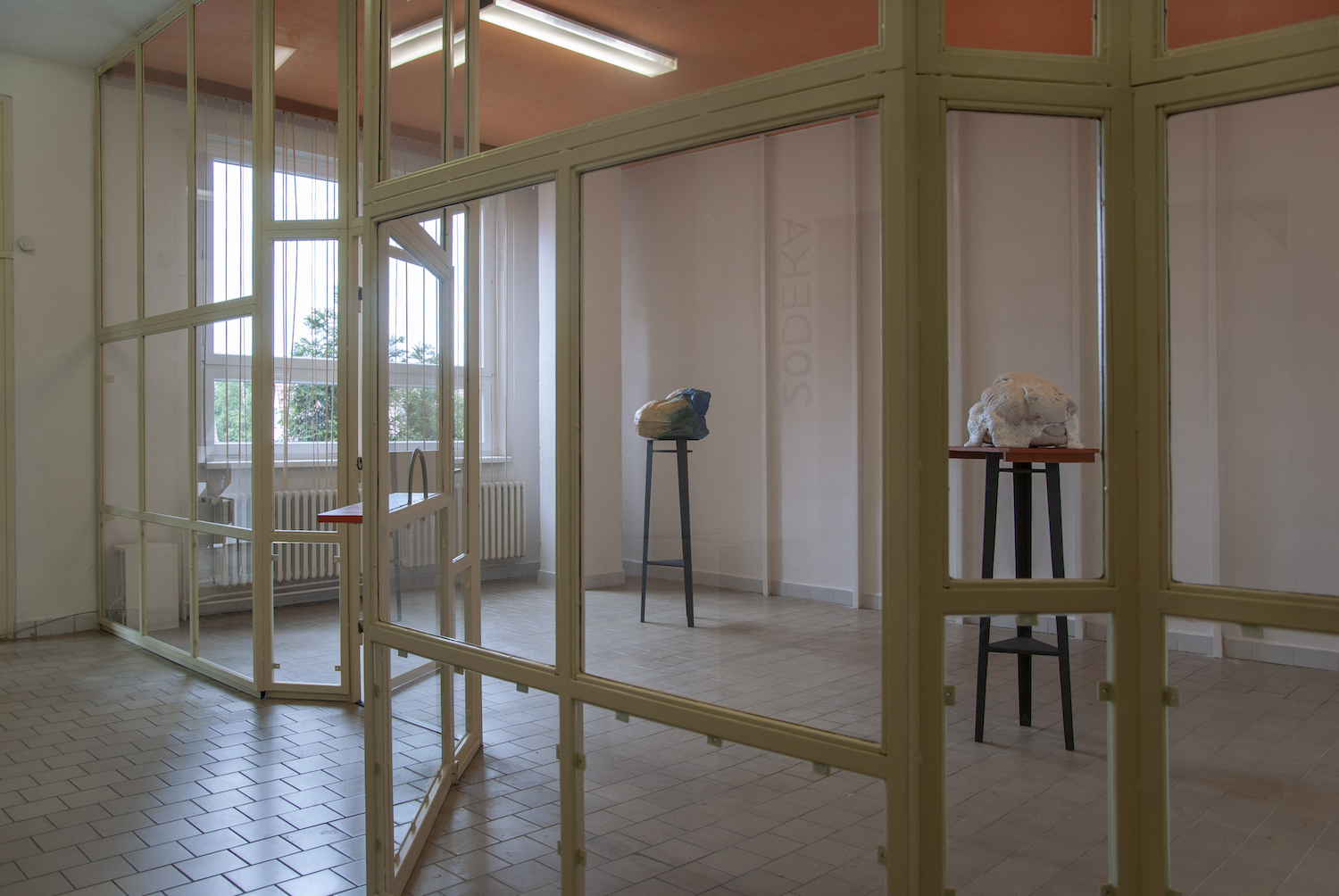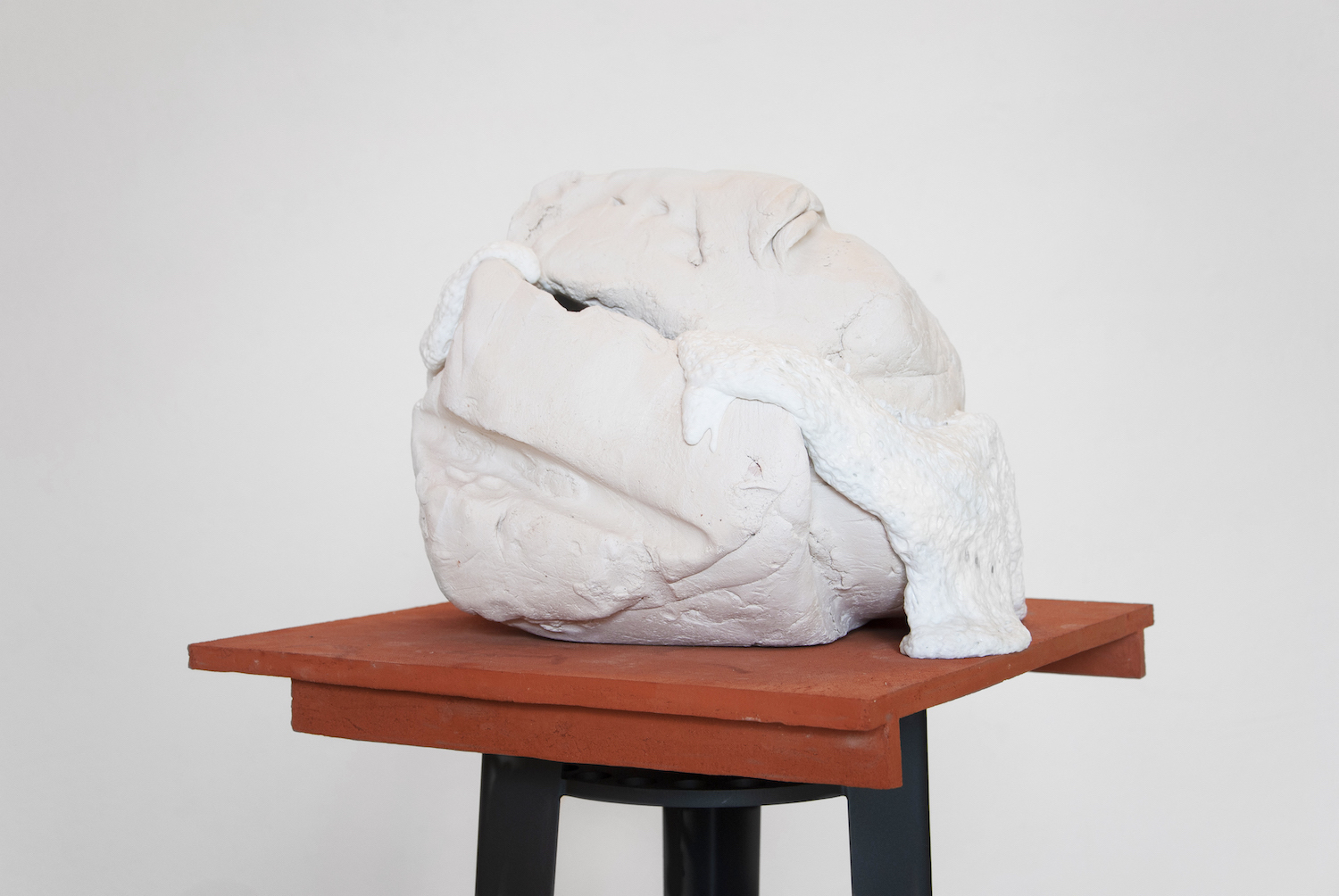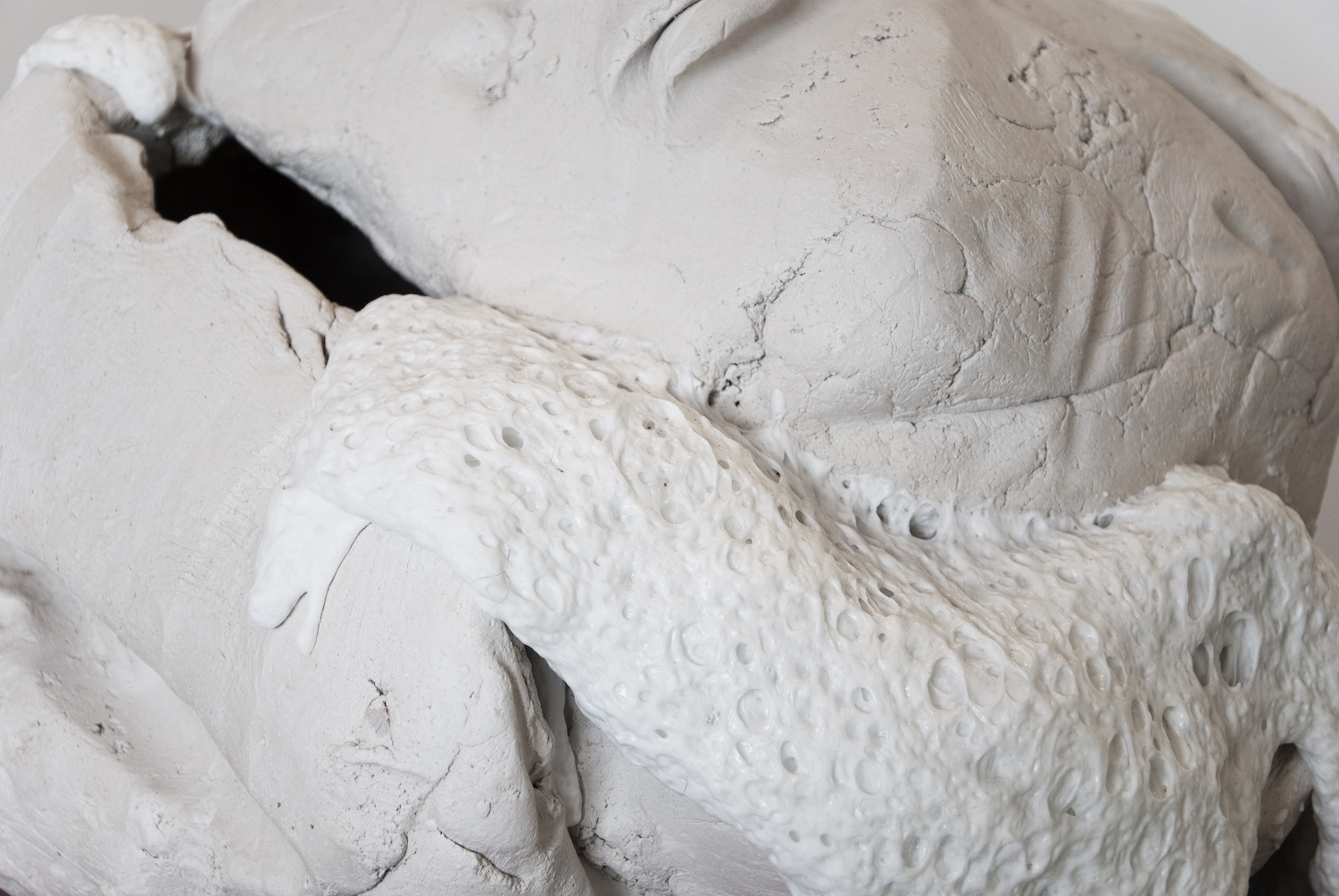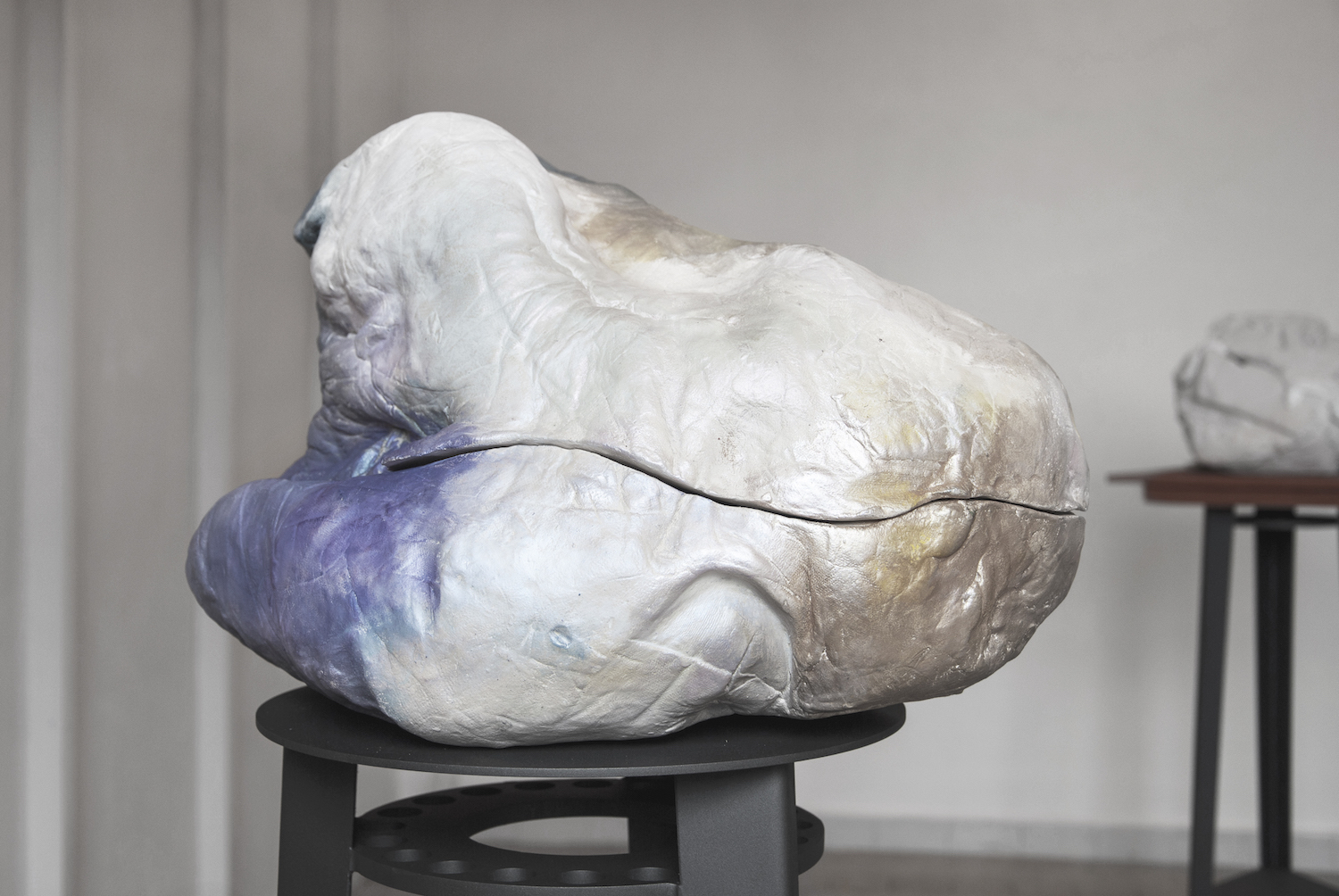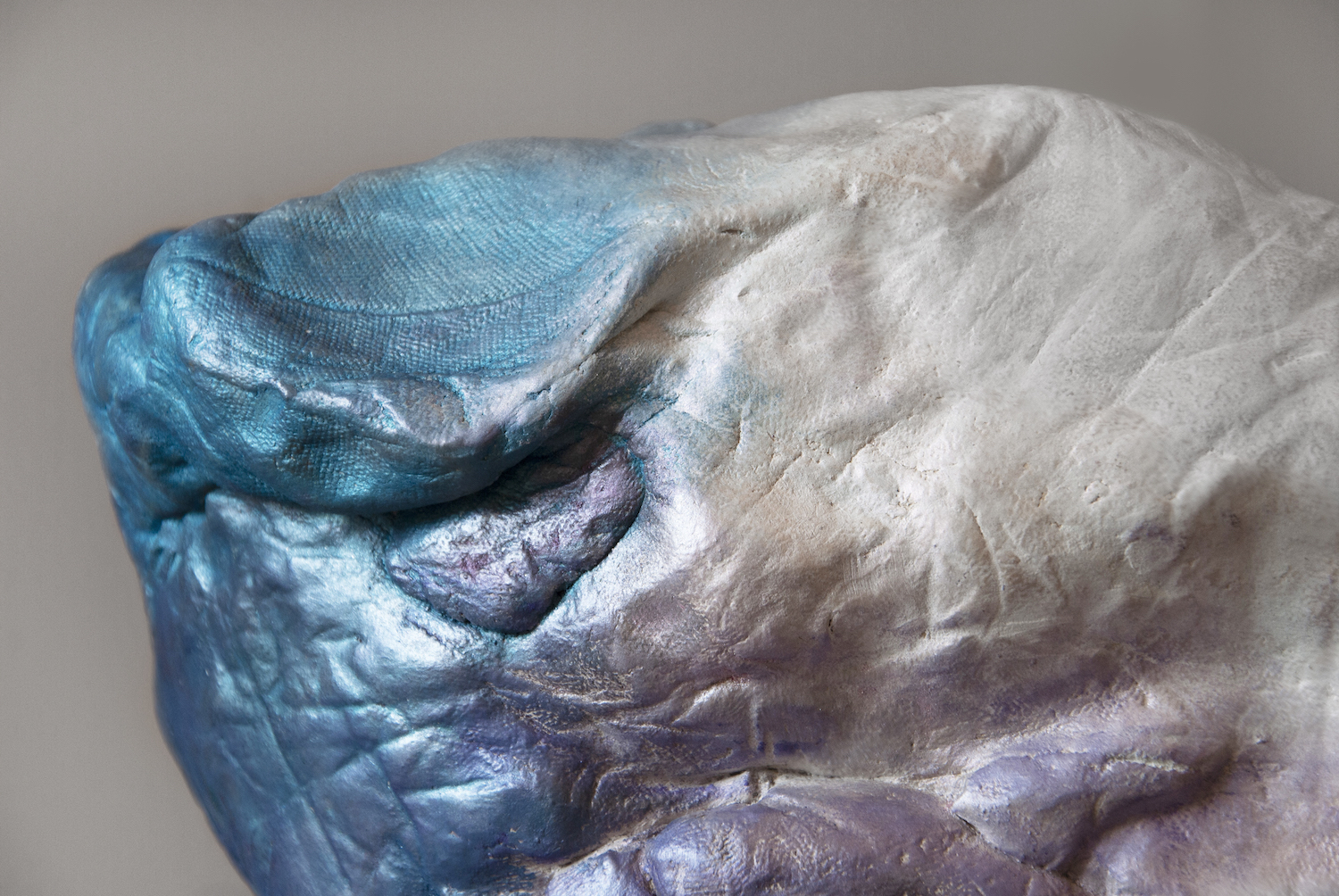2018, ceramics and make-up, metal pedestals, sizes of the ceramic sculptures are variable, installation view Galerie Blansko
curator and text Jana Písaříková
photo credits Šimok Kadlčák
Nina Fránková’s work has long been rooted in her interest in ceramics. However, this inherently traditional and rule-bound artistic craft undergoes a radical transformation in her hands. In her installation for the Blansko gallery, she presents objects from a series dedicated to the natural morphology of ceramic clay. The starting point of this exploration was the discovery of forgotten residual material—hardened ceramic clumps—which she decided to process in a way that would preserve their original organic shape.
This shape resembles ordinary stones, which have long fascinated artists as entities of contemplative primordial matter, symbols of temporal permanence and inexpressible memory. The exhibited objects thus contain an undeniable paradox: a technologically demanding transformation that aims to retain the exact same shape as at the beginning of the process. Perhaps for this reason, they are placed on structures reminiscent of modeling tables. This transformation is intriguing precisely because it seeks to remain invisible, as if these objects were still at their starting point, awaiting change.
A significant metamorphosis has also occurred in the space where the objects are installed. For the duration of the exhibition, they have taken over the emptied office spaces of the gallery. Here, they dominate the environment as if they had returned to their primordial setting, much like the transformed Gregor Samsa in his bedroom.
It is evident that the artist is going against the fundamental principle of traditional ceramics, which typically molds new shapes from raw material. Instead, she engages with ceramics in the context of contemporary fine art. Many of her objects emerge through the conceptualization of the ceramic production process, where chance and performativity play an essential role. She carves out pieces of waste material or manipulates clay using techniques more commonly associated with action painting, performance art, and art brut—such as working with found and recycled materials, suspending clay, or throwing it.
